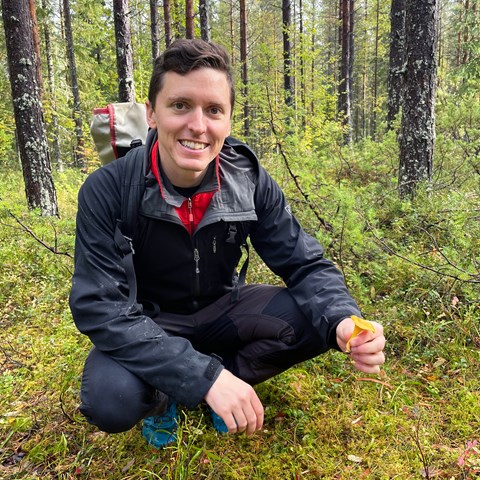Facts:
Hupperts SF, Gerber S, Nilsson M-C, Gundale MJ (2021) Empirical and Earth system model estimates of boreal nitrogen fixation often differ: A pathway toward reconciliation. Global Change Biology. doi: 10.1111/gcb.15836.

SLU research project gets funding to fill knowledge gap about one of the boreal forest's most crucial nutrients.
Forests rely on nitrogen for growth. However, in the cold, boreal forests, the availability is often so low that nitrogen becomes a limiting factor in the trees' growth potential. Organisms like mosses are crucial in forest landscapes for this reason, as they can capture and fix nitrogen to the ecosystem. Researchers have long considered mosses as a key contributor to nitrogen in the boreal forest. However, they seem to be only a part of the puzzle.
Stefan Hupperts, a postdoctoral researcher at the Department of Forest Ecology and Management, participated in a 2021 study that found that modeled predictions of boreal nitrogen fixation under climate change often differ from experimental measurements. In a recent estimation the mosses' contribution to total nitrogen input is smaller than previously thought, especially in younger forests.
– This means that a significant amount of nitrogen is added to the ecosystem somehow, but we don't yet know how, says Stefan Hupperts.
The majority of the forest's nitrogen supply comes from other, still unknown, mechanisms. It is in the pursuit of this nitrogen's origin that Stefan Hupperts now has received four million SEK in funding from Swedish state research council Formas.
– About 66 percent of nitrogen is unexplained. Mosses account for less than the remaining 34 percent because nitrogen can also come from deposition, says Stefan Hupperts.
But there is a prime suspect in the mystery of the missing nitrogen source. In areas dominated by birch or other deciduous trees, the data show that nitrogen accumulates much faster, according to Stefan Hupperts. Therefore, activity will be measured in, among other things, birch roots and in decomposing leaf litter. The project includes investigations in forests outside Arvidsjaur and Jokkmokk, measurements in a controlled greenhouse environment, but also comparative studies in other countries.
– We have collaborators in Finland and Alaska who will do a similar thing to see if the trends we find in Sweden is generalizable in other boreal forests. This funding will help us actually go and do this sampling and tests. I am super excited and it will hopefully answer some really important questions of boreal forest ecology, Stefan Hupperts says.
Finding the answer to the boreal forests' most important nitrogen sources could help forestry in its strategies, says Stefan Hupperts. But the research can also provide an indication of how a warmer climate affects the key players in providing the forest with the sought after nitrogen.
– If climate change affects mosses, you could predict how nitrogen fixation is also affected. Understanding how nitrogen gets into the ecosystem is really important for being able to predict forest productivity with increased temperatures, says Stefan Hupperts.
In total, 630 MSEK was granted across 189 research projects through Formas' open call of 2023. 1 259 applications were assessed and 15 percent of them were approved.
Totalt fördelades 630 miljoner kronor till 189 projekt i Formas öppna utlysning för år 2023. 1 259 ansökningar granskades och 15 procent av dem beviljades.
Read about the other approved applications in Formas open call.
Hupperts SF, Gerber S, Nilsson M-C, Gundale MJ (2021) Empirical and Earth system model estimates of boreal nitrogen fixation often differ: A pathway toward reconciliation. Global Change Biology. doi: 10.1111/gcb.15836.